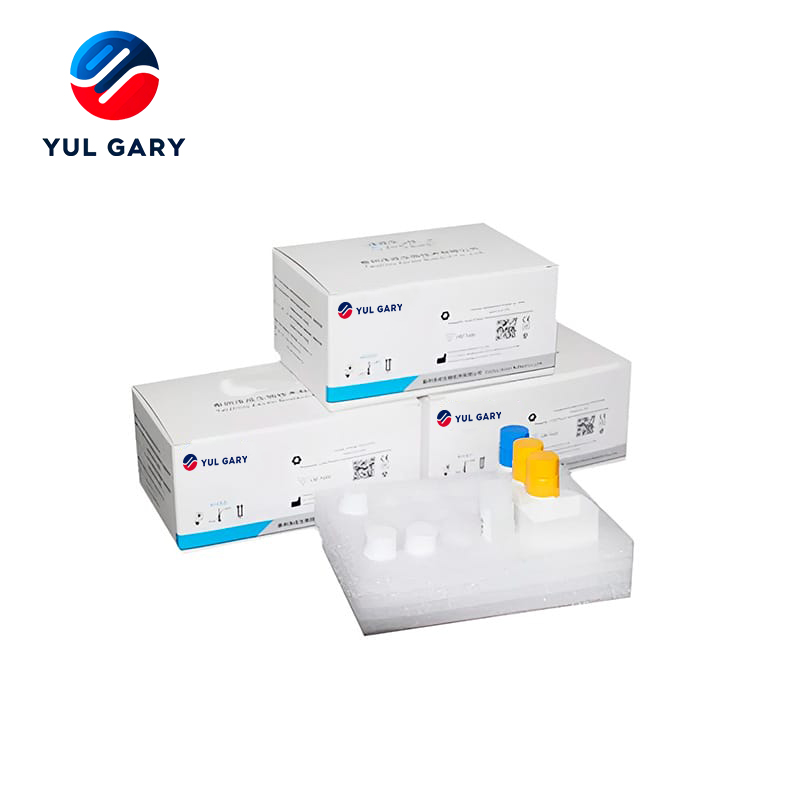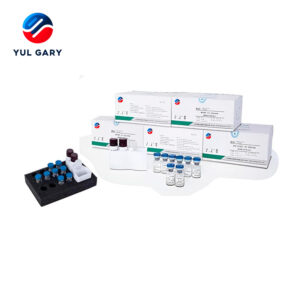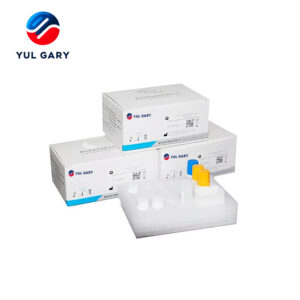Description
The Torch Test YG1959//YG1968 is a state-of-the-art diagnostic solution specifically developed for use with IVD CLIA Analyzers. This kit comprises an array of tests, including Toxo IgG, Toxo IgM, Rubella IgG, and more, designed to detect infectious diseases with precision. Thanks to cutting-edge coupling technology, this test kit offers exceptional stability and sensitivity. Anchored by a patented core material such as magnetic beads and a unique substrate solution, the product assures users of high performance, seamless automation, and reliable clinical diagnostics.
Market Price
The pricing for the Torch Test YG1959//YG1968 varies according to suppliers and regions. The market price typically ranges from $500 to $800 per kit, depending on the supplier’s offering, order quantity, and additional service packages. It’s advisable to request quotes from multiple suppliers to ensure competitive pricing and quality service.
Frequently Asked Questions
Q: What does the Torch Test YG1959//YG1968 kit include?
A: The kit includes Magnetic Beads, Calibrator Low, Calibrator High, Toxo IgG Anti, Control 1, and Control 2. However, the substrate and washing solution are required for tests but are not provided.
Q: Is technical support available for set-up and operation?
A: Yes, most suppliers provide technical assistance to ensure the kits are correctly set up and operate smoothly with compatible analyzer models.
Advantages and Disadvantages
The Torch Test YG1959//YG1968 offers numerous advantages, including ease of use, rapid results, and excellent compatibility with Chemiluminescence Immunoassay Analyzer models like YG1959 and YG1968. Its advanced magnetic separation system ensures accuracy. On the downside, the need for additional accessories not included in the kit, such as substrates and washing solutions, may be seen as a shortcoming.
Use in the Field
In practical scenarios, the Torch Test YG1959//YG1968 is employed in clinical diagnostics to monitor and manage infectious diseases. Laboratories appreciate its user-friendly magnetic separation system and the rapid turnaround time of test results, enabling timely decision-making in patient care.
Recommendations
To maximize the utility of the Torch Test YG1959//YG1968, it is recommended to store components at a temperature range of 2-8°C. Ensure all accessories, such as the substrate and washing solutions, are readily available to avoid interruptions during testing workflows. Regularly calibrate the equipment to maintain accuracy and ensure reliable diagnostics.
Features
- Compatible with YG1959 and YG1968 analyzer models.
- Includes a variety of tests for infectious diseases.
- Advanced coupling technology for high sensitivity and stability.
- Utilizes a unique magnetic separation system.
- Seamless and automated operation.
Technical Specifications
| Model | YG1959 | YG1960 | YG1961 | YG1962 | YG1963 | YG1964 | YG1965 | YG1966 | YG1967 | YG1968 |
| Tested Parameter | Toxo IgG | Toxo IgM | Rubella IgG | Rubella IgM | Rubella IgM | CMV IgM | HSV-1 IgM | HSV-1 IgM | HSV-2 IgM | HSV-2 IgG |
| Specification | 100 Test/Box for CIA series | |||||||||
| Component | Magnetic Beads | |||||||||
| Calibrator Low | ||||||||||
| Calibrator High | ||||||||||
| Toxo IgG Anti | ||||||||||
| Control 1 | ||||||||||
| Control 2 | ||||||||||
| Accessories Required But Not Provided | Substrate | |||||||||
| Washing solution | ||||||||||
| Sample material | Serum | |||||||||
| Sample volume | More than 200μL | |||||||||
| Storage | 2-8°C | |||||||||





